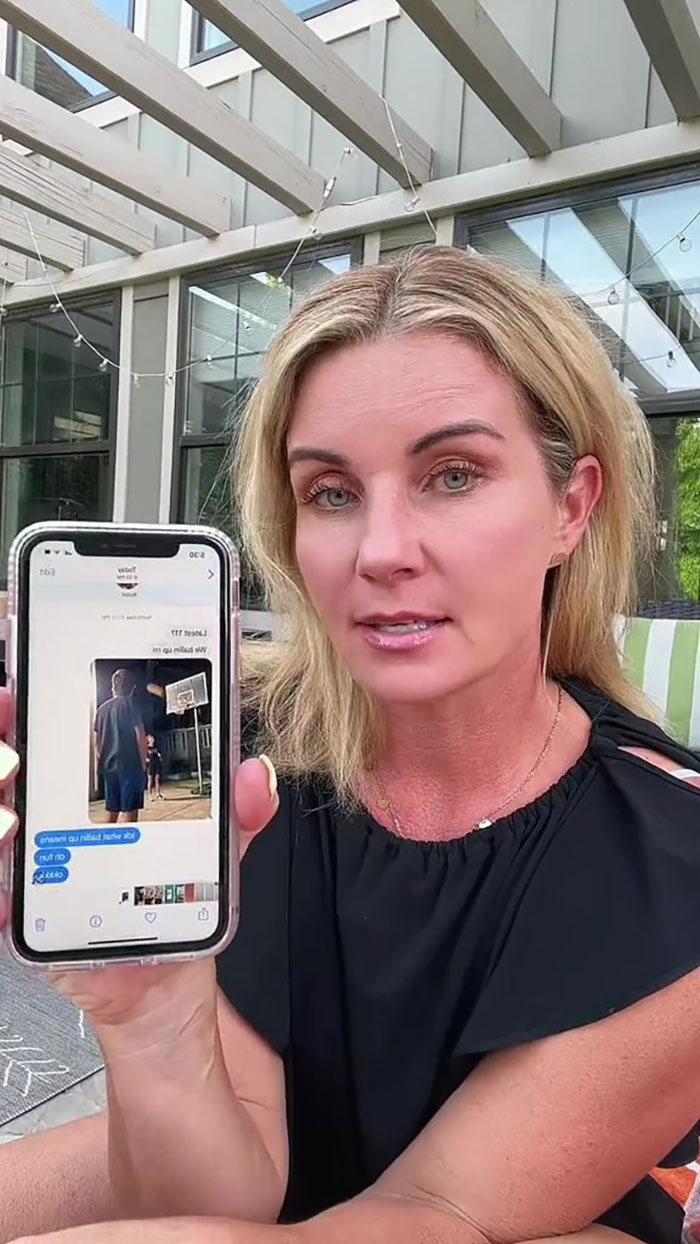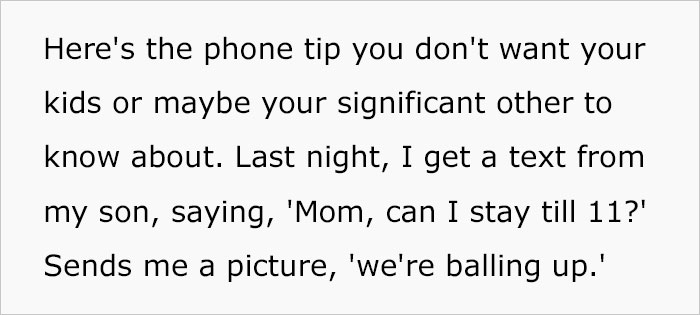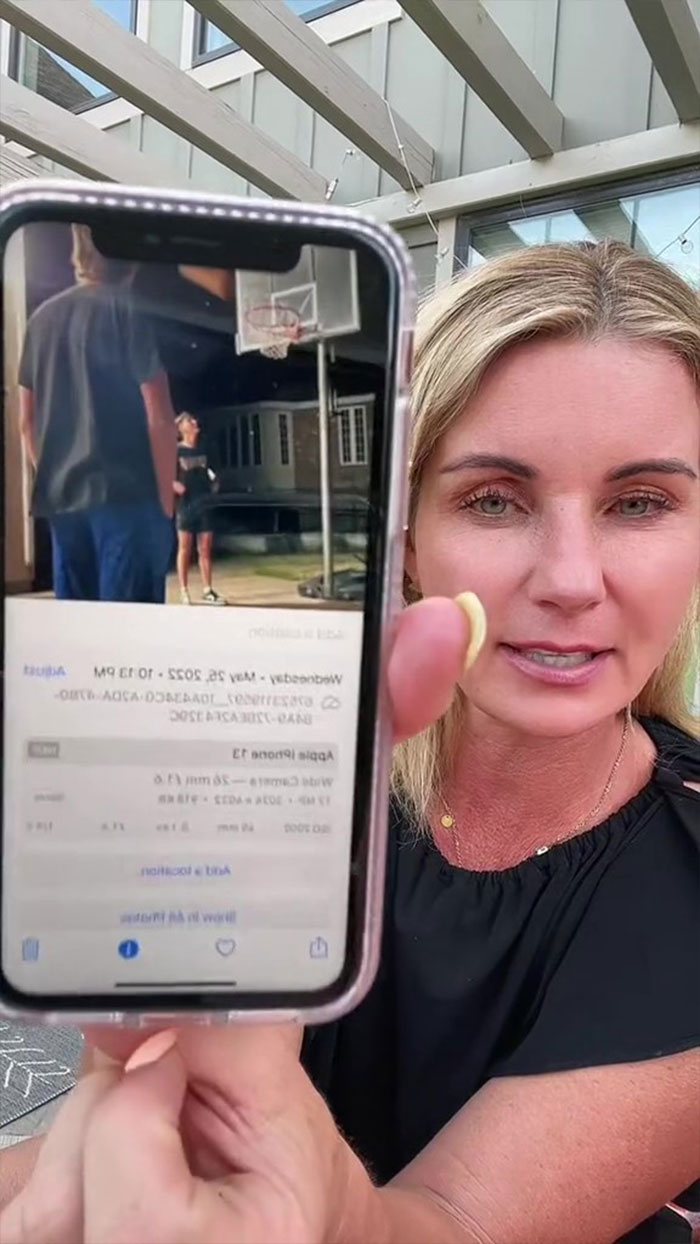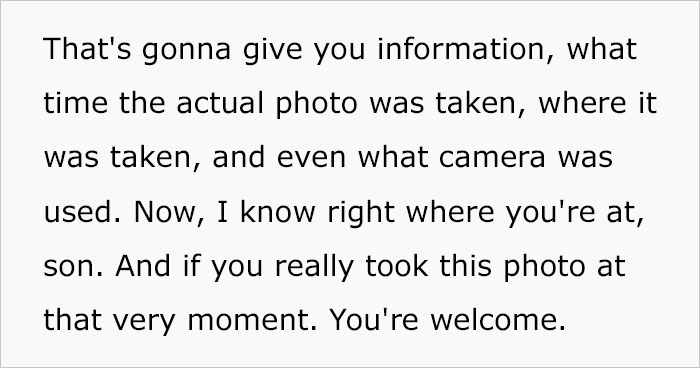If you’re not yet convinced that technology knows a tad bit too much about you, then brace yourself, it’s about to get wilder.
Besides all of the location, search history and other forms of informational tracking that your phone does—mostly for user experience improvement and targeted ad purposes—there’s also this thing called image metadata, which are various details associated with a camera someone snaps, usually on their phone.
This also led to two videos on TikTok that brought about more awareness of why it’s useful, and why it can cause a risk of danger to folks.
More Info: Original Video | TikTok Stitch
Your phone might know more about you than you might think, and that’s because it saves a bunch of data in the pictures you snap

Image credits: Marco Verch Professional Photographer
Chari Pack of Persnickety Box, a digital photo print service, went to TikTok to share a phone photography tip—one of many on the channel—this time about image metadata.
If you’re not aware, image metadata is hidden information that is stored on the image file. This includes several kinds of data with varying degrees of specificity—everything from technical details (aperture, shutter speed, ISO number, focal depth, DPI, etc.) to descriptive data (creator, image keywords and captions, titles, comments, etc.) to administrative information, which is mostly added manually, but can still be stored on the file, and this includes licensing rights, restrictions and contact info.
Chari pack of Persnickety Box pointed out that photos contain image metadata, which can be used to track, for instances, where your kids are

Image credits: @persnicketybox
One of the many things that the image stores is GPS coordinates. This means that whoever gets an unedited image file from you can also potentially learn of when and where the photo was taken. And this applied to all camera-equipped smartphones and most digital cameras.
In her video, Pack shows how she got a text from her son, asking if he could stay a bit longer to “ball up”, or in other words shoot some hoops with the boys. This was supplemented with a picture of him balling up. Or shooting some hoops. Whichever one you prefer.


Image credits: @persnicketybox
In her video she shows how anyone can be sure if their kid is actually where they say they are, and when

Image credits: @persnicketybox

Image credits: @persnicketybox
After a fun reply, the mother of 3 downloaded the photo and accessed the picture’s metadata using the iPhone’s photo info feature. One click later, she found out not only when the photo was taken, but also where, so she can now fact-check if her son is actually where he said he is (and when(, and not at a house party at Jimmy’s since his parents are away on a weekend retreat. Or whatever it is that kids (and their parents) these days do.
The feature isn’t bulletproof, but if your kid isn’t aware of it, then you can use it to ensure your kids’ safety







However, PurePower34, a retired detective who dealt with crimes against children, pointed out another, darker side to how this info can be used

Image credits: @purepower34
Anywho, besides all of the comments this sparked, which we’ll talk about a bit later, there was also a stitch by a retired detective, PurePower34 or Killer Bee Tactical, who used to deal with crimes against children and hunted child predators. Bored Panda got in touch with the detective for an interview.
While knowing where your kid is is great and all, PurePower provided a different perspective—one based in risk of crime. The same tags that can tell you where your kid is can also tell where you are to potential stalkers, human traffickers, or other criminals.
Specifically, he explained that people with the wrong intentions might use the metadata to figure out where you are, where you live, and other sensitive info


Image credits: @purepower34
“If you’re online dating, you send photos to a stranger—you just sent them where you were. So, if you’re standing on your porch when you took the photo, that could be an issue,” elaborates PurePower.
What he suggested doing is, instead of sending a raw (in some cases filtered) photo, take a screenshot of it. Screenshots do not have the same metadata as the photo would, and will thus guarantee your privacy. Granted you haven’t leaked anything elsewhere.
“I worked crimes against children and hunted child predators around the world; we worked with Interpol to solve cases wherever they led. We would use clues in the image itself as well as any exif info attached to the photo,” explained the retired detective. “They have exif scrubber apps that will remove the data from the image, but the simplest way is to take a screenshot.”
But one way to avoid this is to take screenshots of your photos, as he explains in his now-viral video
@purepower34 #stitch with @persnicketybox @purepower34 screenshots #momsoftiktok #dadsoftiktok #kidssafety ♬ Summer – Instrumental – Devinney
And this isn’t just photos—it’s videos too. Videos also have similar metadata information recorded and available on the file. Granted, both videos and photos are usually somewhat processed if uploaded to social media or social apps, but the media itself makes certain tags available to the public, with location being one of the most popular ones, and the file might still retain its metadata.
And as it turns out, if you’ve sent an image to someone, most apps don’t give you a way to unsend it. “As far as safety, you can’t un-ring a bell once the image is sent, so you have to be more vigilant about your surroundings and situational awareness,” said PurePower. “Apple just announced you’ll be able to recall messages for 15 minutes, so maybe images will be included in iOS 16?”
“Metadata is always a concern, but it’s more common for people (especially kids) to not pay attention to their background. With image searching programs, sometimes you can narrow down a photo that could have been taken anywhere in the world, to a sidewalk.”
And folks were mostly thankful for the piece of advice, also suggesting just finagling with the settings to make sure there is no metadata in the first place





In another video of his, the detective elaborated about video hygiene, and how putting a video out there can give loads of hints to potential robbers, kidnappers and other miscreants. If you show off your new place, folks with bad intentions might use the background to locate you. Everything from the outlets to the trees to buildings and even license plates can help folks pinpoint your location And that’s beside the possibility of GPS tagging being enabled on your phone. The same practically applies to photos too.
Now, when it comes to metadata, it can be easily removed and edited using appropriate software, so some might not even have any problems here. Also, it greatly depends on the operating system and even device.
We here are Bored Panda HQ have tested this out and some phones tracked the location, others didn’t, yet others did, but only showed it on the phone, but not in the metadata. And I personally also tested this on my Android device with the location permission denied and the camera app refused to work, so, I guess, you’re welcome?
So, when it comes to tracking kids, it’s not foolproof, and when it comes to crime, it sometimes solves the problem itself. But who wants to risk that?




Folks online found this information (from both creators) helpful. While it is not foolproof, depending on what you want to do with it, it’s still useful to know, if anything, for security reasons. The original video got 1.6 million views, whereas the stitch was another 2.7 million, with 84,000 and 327,000 likes respectively.
If you want to learn more about digital, or even general, safety, PurePower’s channel has loads of videos covering everything from heads ups to advice to just general information on how to stay safe and how to minimize the risks of becoming a victim.
But before you go, tell us your thoughts on this, or share your digital safety tips in the comment section below!
The post Retired Detective Explains Why Online Dating App Users Should Never Text Their Raw Photos To Matches first appeared on Bored Panda.
from Bored Panda https://ift.tt/pkYV5IG

